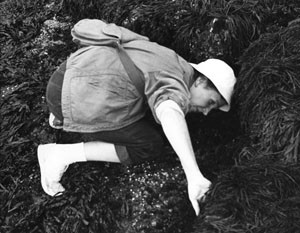 Silver Spring, Maryland
Silver Spring, Maryland
1961
A small, thin-faced woman sits at a typewriter in an office crammed with books, papers, and scientific journals. She is typing rapidly, and the keys’ clatter fills the quiet, sunny room. She is writing a book, and the message she has to tell is terrifying. She knows she has not much time in which to tell it.
But after hours of work, she takes a break. It is springtime, and she loves the spring, especially the sweet sound of birdsong. She is too ill to go birding these days, but she can still enjoy birds from the window of her suburban Maryland home. She glances out the window and smiles at the sight of a robin in a neighbor’s yard.
The robin stands on the green square of neatly-trimmed grass, not a dandelion in sight. He takes a step, and then tilts his head, listening, as his bright black bead of an eye stares at the ground. He hears a tiny sound, and tenses, ready for the kill. Abruptly, his beak flashes down and snares a fat worm, dragging it wriggling from the soil. His red chest puffs with pride, and he spreads his wings and flies home to where a nestful of young robins wait, hungry mouths gaping wide.
The woman smiles as the robin flies away, her dark eyes lightening; then she sighs and bends over the typewriter again. Rachel Carson loves birds, and spring–and she has work to do.
Rachel Carson was chained to her typewriter and research desk in the muggy depths of Maryland, desperate to finish her masterpiece Silent Spring before ill health made her unable to write. But whenever she could, she fled north to the rocky coast of Maine. She found life, solace, and joy in the sea.
 One summer, I made a pilgrimage to Rachel Carson’s summer home in Maine. It’s not open to the public, and from the road it was even hard to figure out which little cottage was hers. But there was no mistaking her gravelly beach studded with rocks and draped with seaweed.
One summer, I made a pilgrimage to Rachel Carson’s summer home in Maine. It’s not open to the public, and from the road it was even hard to figure out which little cottage was hers. But there was no mistaking her gravelly beach studded with rocks and draped with seaweed.
In Rachel’s memory, I tried taking a commemorative swim, but was defeated by the icy Maine water before I got past my knees. While trying to thaw out my toes, I began to appreciate the subtle beauty of Rachel Carson’s favorite type of plant: seaweed.
At the end of her life, Rachel Carson was struggling to raise an adopted child, write a world-changing book, and battle terminal cancer, simultaneously. She didn’t have any spare time for gardening. Her backyard was the North Atlantic, and her garden was a salty one.
Where the rest of us see dull brown rockweed draped over the boulders at low tide, she saw magic: “A fantastic jungle, mad in a Lewis Carroll sort of way.” I love her description of seaweed rising and falling with the tide: “For what proper jungle, twice every twenty-four hours, begins to sag lower and lower and finally lies prostrate for several hours only to rise again? Yet this is precisely what the rockweed jungles do.”
There’s tons of rockweed here, as there are along rocky coasts all around the North Atlantic—this is the same seaweed that lines Norway, Ireland, and Iceland. One reason there’s so much rockweed, a type of brown algae, is that not many creatures eat it. In spite of the fact that it’s packed with nutrition, the plant creates a chemical that makes it distasteful to most herbivores, although a few snails and limpets will nibble it from time to time. But Rachel Carson is correct in describing the mats of algae as a jungle, in the sense that it’s a habitat providing camouflage and shelter for hundreds of species. Rockweed is sometimes harvested for fertilizer (because of all those nutrients it contains, absorbed from seawater) and also as packing material for, of all things, live lobsters. But every tangle of rockweed is packed with baby crabs, fish eggs, little snails and shrimp and all sorts of life—the weird marine life that Rachel Carson loved and wrote about in her books The Sea Around Us and The Edge of the Sea.
Although she’s hailed as a pesticide expert, she was actually a marine biologist, and hated writing about dead birds and toxic chemicals. Silent Spring may have been an “explosive best-seller,” but it’s not exactly a thriller. It’s long and dull, full of depressing details and statistics, very tough going. Knowing that the pesticide industries would oppose her findings bitterly, Rachel Carson spent years in painstaking research, in order to be sure that the facts her book contained would be incontrovertible, and her grim findings don’t make for light reading, and must have made for dismal writing. But, she said, “I could never again listen happily to a thrush song if I had not done all I could.”
The book was finished less than two years before she died. “Last night the thoughts of all the birds and other creatures and all the loveliness that is in nature came to me with such a surge of deep happiness, that now I had done what I could—now it had its own life…”
Her ashes were scattered along the coast, on rocks draped with garlands of seaweed.
[from my book The Teeth of the Lion: The Story of the Beloved and Despised Dandelion]





Recent Comments